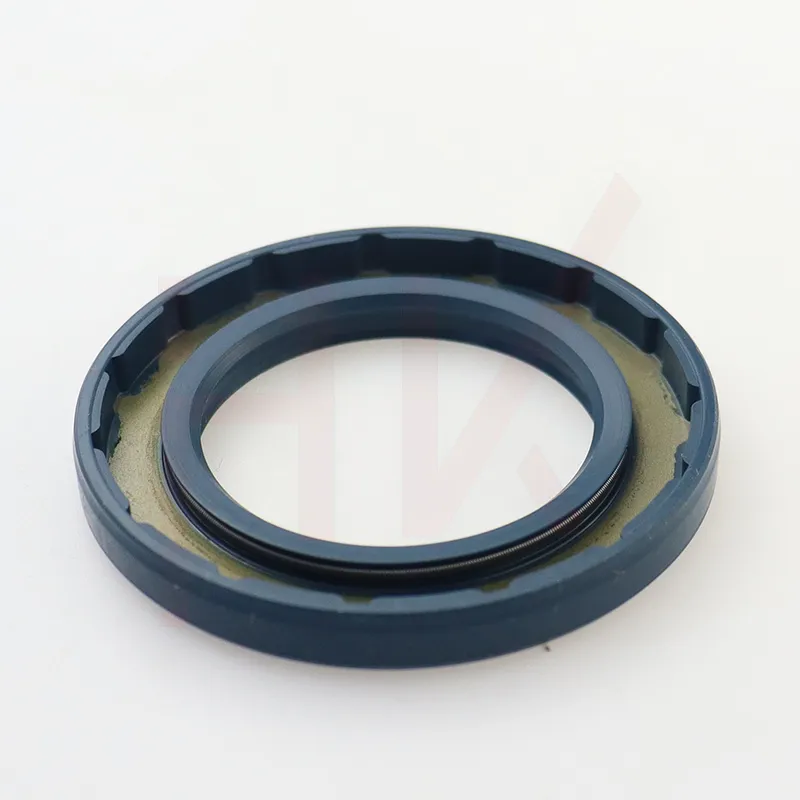nov . 15, 2024 11:36 Back to list
hub oil seals axle seals
Understanding Hub Oil Seals and Axle Seals Their Importance and Maintenance
In the world of automotive engineering, every component plays a critical role in ensuring efficient performance and reliability. Among these components, hub oil seals and axle seals are crucial players that often do not receive the attention they deserve. Their primary function is to retain lubricant, prevent contamination, and protect critical components from wear, thus extending the life of vehicles and machinery.
What Are Hub Oil Seals and Axle Seals?
Hub oil seals, located in the hub of wheel assemblies, are designed to keep lubrication within the hub while preventing dirt, dust, and moisture from entering. They form a barrier against contaminants that can degrade the quality of the lubricating oil, which in turn could lead to premature wear of the bearings.
Axle seals, on the other hand, are found at the ends of the axle shafts where they enter the differential housing. Their role is similar to that of hub oil seals; they keep the differential oil confined within the housing while also preventing outside elements from causing damage to the axle shaft and bearings. Both types of seals are often made of durable materials like rubber or polymer compounds, designed to withstand extreme temperatures and pressure variations.
Importance of Hub Oil Seals and Axle Seals
The significance of these seals cannot be overstated. If either seal fails, it can result in oil leaks, leading to a decrease in lubrication. This can cause the bearings to overheat and wear out prematurely, leading to costly repairs and, in the worst cases, complete failure of the wheel assembly or drivetrain components. Furthermore, contaminated lubricant can lead to additional issues like corrosion and metal fatigue, compounding the potential damage.
Regular maintenance of hub oil seals and axle seals is crucial for vehicle longevity. Keeping an eye on fluid levels and watching for leaks can help identify issues before they become major problems. For instance, if you notice oil spots where your vehicle is parked, it could indicate a failing seal that requires immediate attention.
Signs of Seal Failure
Identifying the early signs of seal failure can help in taking corrective actions promptly. Common indicators include
1. Oil Leaks The most obvious sign is visible oil leaking around the hubs or along the axle. This leakage indicates that a seal may have worn down or become damaged, allowing lubricant to escape.
hub oil seals axle seals

2. Noise from Bearings A grinding or whining noise emanating from the wheel hub or axle area can signal bearing failure due to lack of lubrication. If the bearings are not adequately lubricated, they can overheat and wear out quickly.
3. Increased Vibration Unusual vibrations when driving can also indicate that the seals are failing, leading to uneven wear on tires and bearings.
4. Contaminated Oil If the oil appears dirty or gritty, this suggests that contaminants are entering the system, likely due to a compromised seal.
Maintenance Practices
To extend the life of hub oil seals and axle seals, consider the following maintenance practices
- Routine Checks Regularly inspect your vehicle for any signs of leaks and ensure that oil levels are maintained within the recommended range.
- Replace Worn Seals If a seal is suspected to be failing, it’s crucial to replace it immediately to avoid further damage to the vehicle.
- Use Quality Lubricants Always use high-quality lubricants that meet the manufacturer's specifications. A good lubricant not only enhances performance but also aids in protecting seals from degradation.
- Professional Inspections Schedule periodic inspections with a trusted mechanic, especially before long trips or seasonal changes. Professional mechanics can identify potential problems that an untrained eye might miss.
Conclusion
Hub oil seals and axle seals are critical components that contribute significantly to the overall functionality and longevity of vehicles. Understanding their importance and maintaining these seals diligence can save vehicle owners from costly repairs and extend the life of their vehicles. By practicing regular maintenance and being attentive to the signs of wear, drivers can ensure that their vehicles continue to operate smoothly and efficiently.
-
The Trans-formative Journey of Wheel Hub Oil Seals
NewsJun.06,2025
-
Graphene-Enhanced Oil Seals: Revolutionizing High-Pressure Oil Sealing
NewsJun.06,2025
-
Future of Hydraulic Sealing: Advanced Intelligent TCN Oil Seals
NewsJun.06,2025
-
Don’t Let a Broken TCV Oil Seal Ruin Your Day
NewsJun.06,2025
-
Bio-Inspired Dust Seals for Better Sealing Performance
NewsJun.06,2025
-
Biodegradable and Sustainable Hydraulic Seal Materials
NewsJun.06,2025
-
Top Oil Seal Solutions for Your Industrial Needs
NewsMay.22,2025
Products categories
















